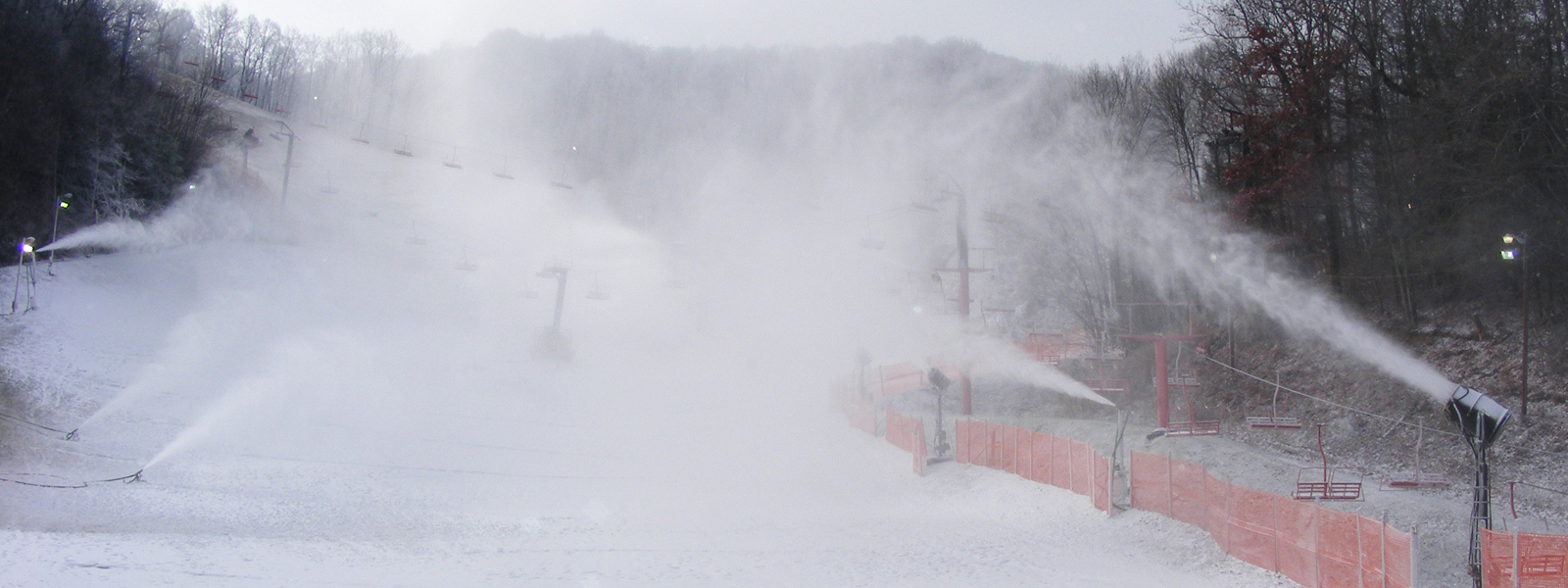

The Short Version: We need below freezing temperatures (preferably 28-29 degrees or lower) to make snow for the Ski Slopes … water mist blown into the air, turning to snow before hitting the ground (see first photo). It generally takes at least 2 cold nights to make enough snow to open the first few slopes … usually in early to mid December (most years closing in early to mid March). So, although “man-made”, we are still at the mercy of Mother Nature. Exact opening and closing dates are impossible to predict more than just a few days in advance.
So how can Snow Tubing be open at times when the Ski Slopes are not (early and late in the winter season)?
The Snow Tubing Hill is serviced by a refrigerated snow making system called Snow Magic, which can produce snow (in limited quantities) at above freezing temperatures, to a point. Unlike the ski slope system (wide coverage and air temperature dependent), The Snow Magic machines put out an already frozen “shaved/powderized ice” which looks, feels and behaves just like other snow. So, the Snow Tubing conditions can be “controlled” to a point, which allows us to open earlier (the weekend before Thanksgiving each year) and remain open daily well into the following March.
The next 3 photos show the basic process to open the Snow Tubing hill with Snow Magic machines …
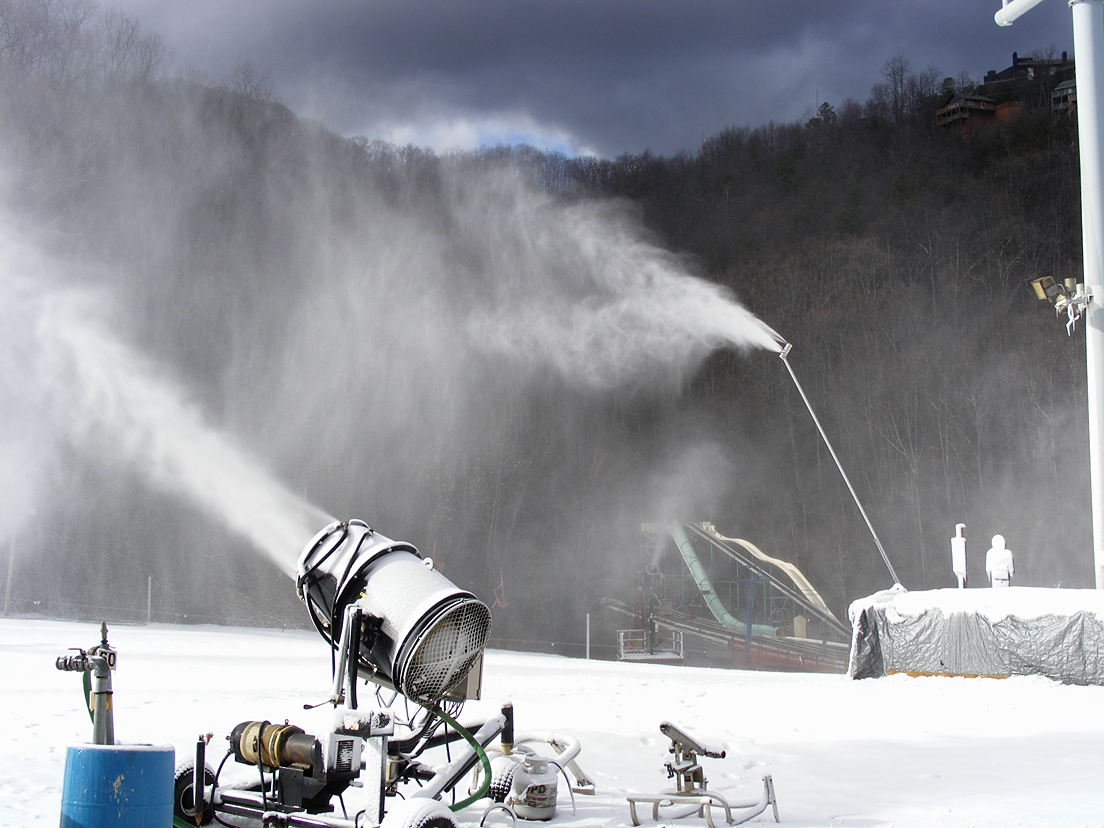
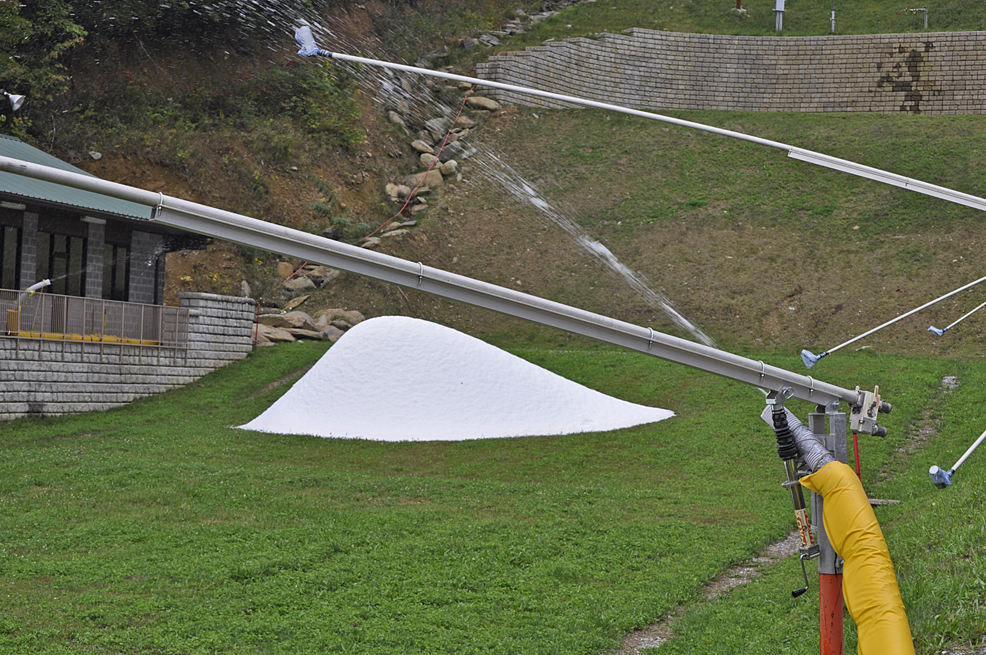
Weeks before opening, production begins
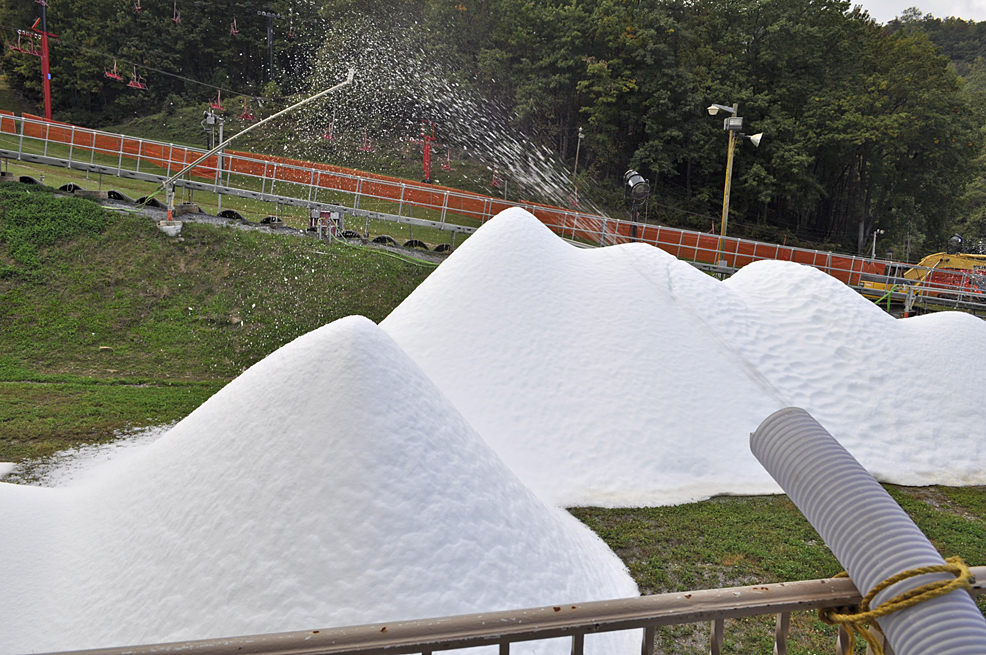
Piling it up
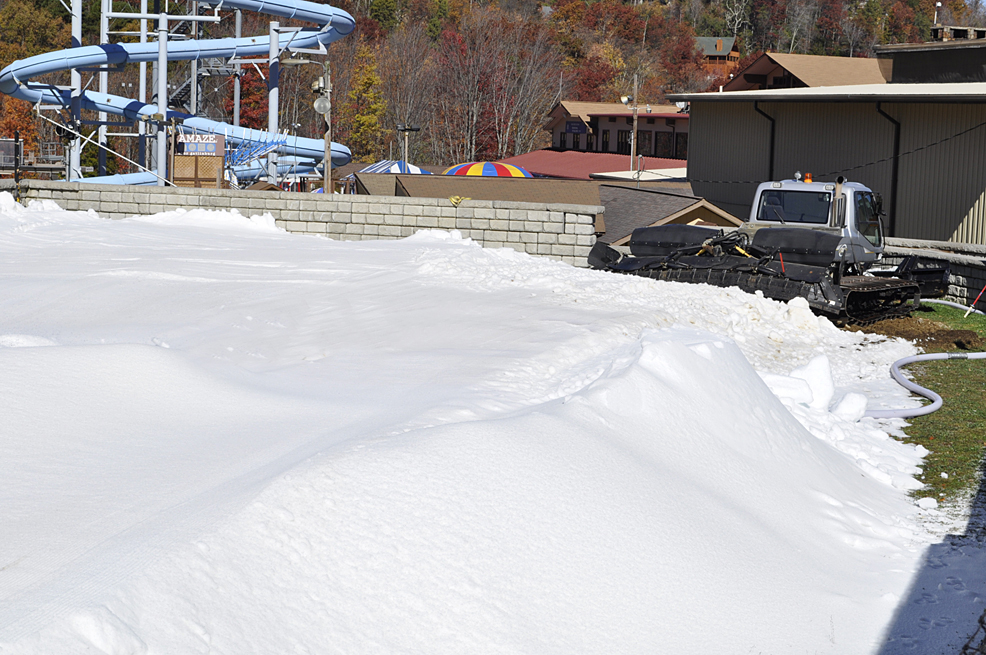
Spreading it out
PLEASE NOTE: Even though we make snow whenever possible, once a “base” is put down and packed, it is not necessary to make snow every day to remain open. It takes longer than one might think for snow to melt away, even at well above freezing temperatures … Plus, the ski slopes and tubing hill are “groomed” every day to keep the surface as consistent and ice-free as possible.

A Detailed Explanation Of The Ski Slope Snow Making System:
Machine-made snow is NOT artificial snow. It is, in fact, frozen water droplets. There are a variety of ways to produce these droplets, but they must freeze before hitting the ground or all we have is rain. There is nothing “artificial” ( or “fake” ) about this snow. It does exhibit a slightly different crystalline pattern and density than regular snow, which actually allows it to melt more slowly and is therefore more durable than natural snow. Even with the ability to produce a high quality and durable machine-made snow, ski area operators do appreciate a good natural snowfall.
Ober Mountain is very proud of its snowmaking system which is one of the largest and most advanced in the world. Our snowmaking system consists of air lines, water lines and electrical lines which run underground to all slopes on the mountain. Attached to the air and water lines and spaced evenly along each slope are air and water hydrants to which the hoses from the snow guns are connected. A series of water pumps take water from the holding ponds and pumps it throughout the area and is monitored to maintain a constant pressure. Very large air compressors are used to produce large volumes of air which is also maintained at a constant pressure.
This air and water is then mixed at the snow gun to produce snow. A nozzle produces tiny water droplets which freeze as they fall through the air to produce machine-made snow. This snow is not a flake but a 3-dimensional snow “puff” that has a much greater density than natural snow.
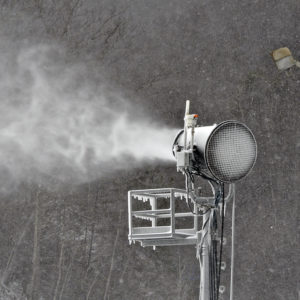
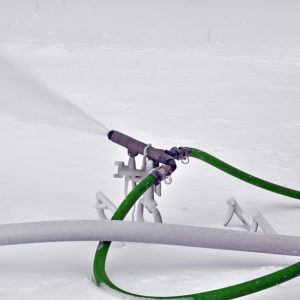
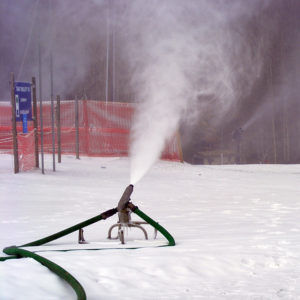
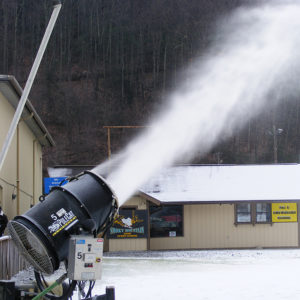
Our fan type units are called “Pole Cat Snowmakers”. Our Pole Cat Snowmakers combine small amounts of compressed air and electricity with large quantities of water and a fan powered plume to provide a high efficiency snowmaking system. A special fan thrusts air through a special housing to direct and deflect the air upwards. Water from the primary and secondary manifolds is then projected to the upper side of the air stream and “seeded” from below by a nucleating compressed air/water mixture. The expanding compressed air mixed with water particles turns into very hard nuclei before mixing with the larger bulk water particles out in the air stream. These partially frozen particles are then lofted high into the air so they have maximum opportunity to crystalize into snow before landing on the ground.
At Ober Mountain an active protein, Snomax, is used which enhances the conversion of droplets of water from a snow gun into snow and is mixed in water to form a concentrate that is metered into the snowmaking water supply. Every water droplet thrown from the snow gun is then seeded with the Snomax nucleator. This is important because the key to efficient snowmaking is to freeze as many droplets as possible before they hit the ground. If the droplets do not contain nucleators, a great many of them may not freeze before they hit the ground. Thus, water with Snomax added will freeze faster, more completely and over a wider range of conditions.
You don’t need to find snow in your backyard to go skiing or snowboarding. If the temperatures have been below freezing for a couple of nights, there is probably fresh snow at Ober Gatlinburg! We normally begin making snow in early to mid December … as soon as favorable temperatures arrive.

